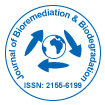Fungal Agents in Bioremediation: Mechanisms and Applications in Pollution Control
Received Date: Mar 03, 2025 / Accepted Date: Mar 30, 2025 / Published Date: Mar 30, 2025
Abstract
Fungal bioremediation has emerged as an efficient and eco-friendly approach to mitigating environmental pollution caused by organic and inorganic contaminants. Fungi, due to their vast metabolic diversity, possess unique enzymatic systems capable of degrading or detoxifying pollutants, including heavy metals, pesticides, petroleum hydrocarbons, and other xenobiotic compounds. This review explores the mechanisms employed by fungal species in bioremediation, such as biosorption, biodegradation, and mycoremediation. The effectiveness of various fungal strains in treating contaminated soils, wastewater, and industrial effluents is highlighted, alongside their potential for large-scale applications. Furthermore, challenges such as the optimization of environmental conditions, cost-effectiveness, and the need for genetic enhancements to improve fungal performance in harsh conditions are discussed. The paper concludes by proposing future directions for fungal bioremediation research to address emerging environmental concerns.
Citation: Christian B (2025) Fungal Agents in Bioremediation: Mechanisms andApplications in Pollution Control. J Bioremediat Biodegrad, 16: 675.
Copyright: © 2025 Christian B. This is an open-access article distributed underthe terms of the Creative Commons Attribution License, which permits unrestricteduse, distribution, and reproduction in any medium, provided the original author andsource are credited.
Select your language of interest to view the total content in your interested language
Share This Article
Recommended Journals
Open Access Journals
Article Usage
- Total views: 452
- [From(publication date): 0-0 - Dec 14, 2025]
- Breakdown by view type
- HTML page views: 371
- PDF downloads: 81
